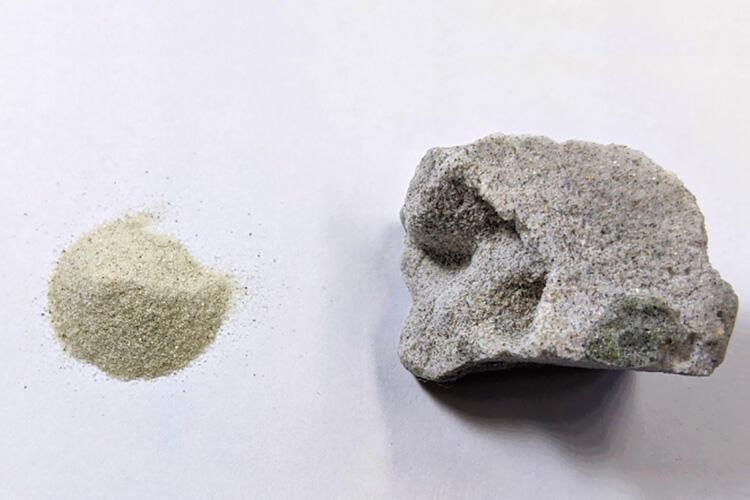Apr 15 2021
Scientists from the Institute of Industrial Science, which is a part of The University of Tokyo, have designed a new technique for synthesizing concrete without cement.

Image Credit: Institute of Industrial Science, University of Tokyo.
Through a simple reaction in alcohol using a catalyst, the researchers directly bonded sand particles. This might not only reduce carbon emissions but also enable the construction of buildings and structures in desert regions, and even on the Mars or Moon.
Concrete is formed of two parts: cement (accountable for 8% of total global CO2 emissions) and aggregate (essentially made of gravel and sand).
In spite of the abundance of sand across the globe, the availability of sand for the production of concrete is quite restricted since sand particles should have a particular size distribution to make concrete flowable.
In concrete, cement is used to bond sand and gravel. Some researchers are investigating how more cement can be replaced with other materials, such as fly ash and blast furnace slag, to reduce CO2 emissions, but this approach is unsustainable because the supply of these materials is decreasing owing to reduced use of thermal power systems and increased use of electrical furnace steel.
Yuya Sakai, Study Lead Author and Associate Professor, Institute of Industrial Science, University of Tokyo
Consequently, a new method is needed to synthesize concrete from inexhaustible materials with less impact on the environment.
Sakai added, “Researchers can produce tetraalkoxysilane from sand through a reaction with alcohol and a catalyst by removing water, which is a byproduct of the reaction. Our idea was to leave the water to shift the reaction back and forth from sand to tetraalkoxysilane, to bond the sand particles with each other.”
A cup made of copper foil was placed in a reaction vessel with materials and sand, and the reaction conditions—like the amounts of alcohol, sand, dehydration agent and catalyst; the reaction time; and the heating temperature—were systematically altered.
Determining the correct proportion of chemicals and sand was crucial to achieving a product with adequate strength.
We obtained sufficiently strong products with, for example, silica sand, glass beads, desert sand, and simulated moon sand. These findings can promote a move toward a greener and more economical construction industry everywhere on Earth. Our technique does not require specific sand particles used in conventional construction. This will also help address the issues of climate change and space development.
Ahmad Farahani, Study Second Author, Institute of Industrial Science, University of Tokyo
The product will probably exhibit improved durability compared to traditional concrete since cement paste, which is comparatively weak against chemical attack and displays huge volume changes as a result of humidity and temperature, is not part of the product.
The study is slated for publishing in Seisan Kenkyu, Vol. 75, 2021, as a paper titled, “Production of Hardened Body by Direct Bonding of Sand Particles.”